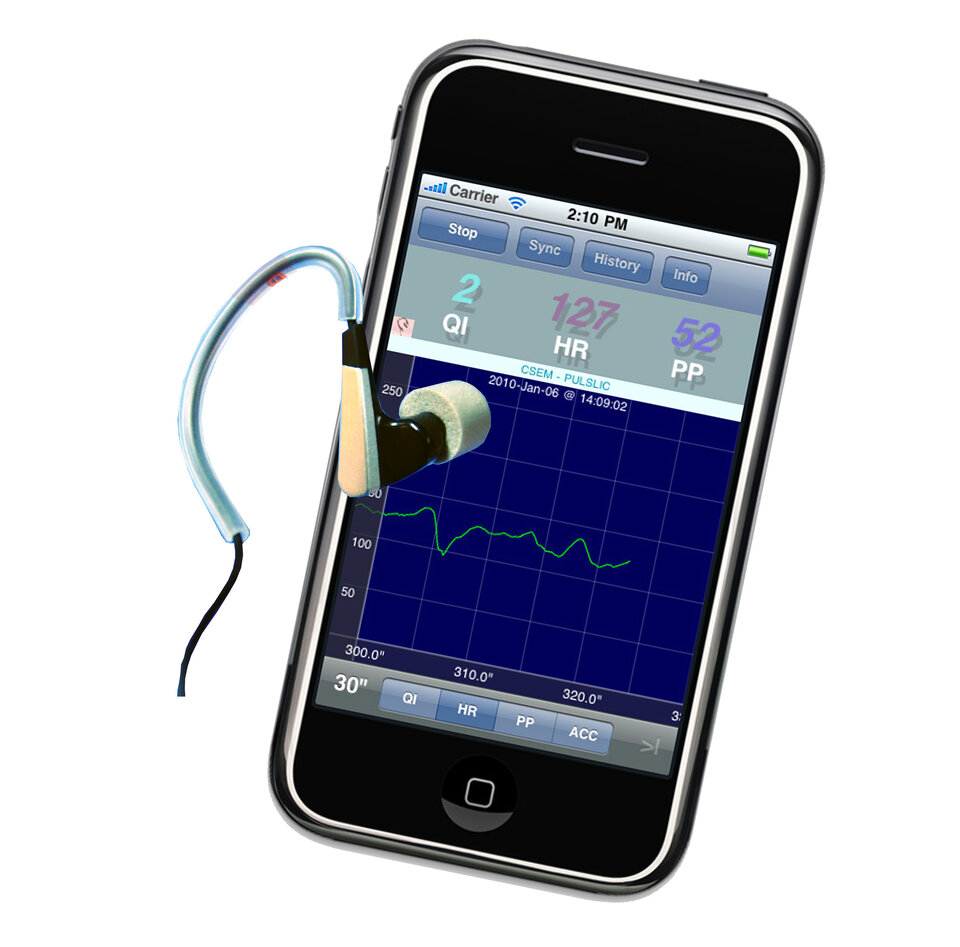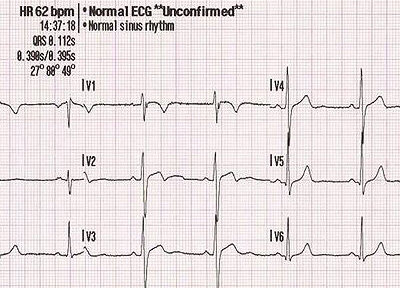Let me hear your heart beat
What if monitoring your heart rate were as easy as listening to music while you jog? Thanks to advances in space technology, an iPhone will soon be able to do double duty: keep you in tune with your favourite artists and your vital signs.
Swiss technology-transfer company CSEM created the final prototype for their Pulsear device this year. A tiny unit embedded in a regular earphone uses infrared signals to see how fast your heart is beating.

It works by sending the infrared signals through the tissues in your ear. A very small photo diode records the results and sends the information via the normal earphone wires to a device that plugs into your phone.
The result is an accurate reading of your heart rate, without the irritation of wearing a chest belt.
"A lot of people listen to music while they exercise and a lot of people find the belts uncomfortable," said CSEM's Dr Andrea Ridolfi, "so we thought it made sense to try to measure heart rate through the ear."
Solution thanks to space-tech development

An earlier attempt by CSEM to monitor heart rate using earphones was not satisfactory, said Dr Ridolfi, because the available technology was not sophisticated enough. But that was before CSEM designed a complex chest sensor for measuring astronauts' blood oxygen levels for ESA's Long Term Medical Survey system.
"We wanted something small, compact and unobtrusive for physiological research," said Michel Lazerges, Senior Engineer in charge of ESA's project.
For long space voyages, it is essential to learn more about humans subjected to strict confinement and extreme environments over many months.

To meet ESA's requirements, CSEM had to develop existing sensor technology. "Once we were done," said Dr Ridolfi, "we said, 'let's recycle this’."
With a grant from the ESA Technology Transfer Programme’s ‘Transfer Demonstrator’ initiative, CSEM created the prototype.
An iPhone application lets you see your heart rate over time onscreen and compare, say, today's jog with last week's. Subjects who tested the app for use during daily activities and fitness training rated the device highly.
While the current prototype measures only heart rate, future versions could easily be adapted to measure additional vital signs such as blood oxygen levels. This would open up a number of medical applications.
For example, it could be used for minimally invasive long-term monitoring of patients with lung conditions. "You can just say, 'go ahead, listen to music'and meanwhile you can keep track of their vital signs," said Dr Ridolfi.
Under test in Siberia

The current model is ideal for sports applications or monitoring people hiking at high altitudes. Currently, the Swiss adventurer Sarah Marquis is using a similar CSEM device to check her own vital signs as she walks from Siberia to Australia.
But even less adventurous travellers could benefit from Pulsear, whose inventors are searching for an industrial partner for commercialisation. Weekend warriors, who worry about overdoing it, can hike, bike or jog knowing that their earphones will warn them if trouble is brewing.
ESA’s Technology Transfer Programme Office (TTPO)
The TTPO’s main mission is to facilitate the use of space technology and space systems for non-space applications and to demonstrate the benefit of the European space programme to European citizens.
The office is responsible for defining the overall approach and strategy for the transfer of space technologies, including the incubation of start-up companies and their funding. For more information, please contact:
ESA’s Technology Transfer Programme Office
European Space Agency
Keplerlaan 1
2200 AG, Noordwijk
The Netherlands
Tel: +31 71 565 6208
Email: ttp@esa.int






